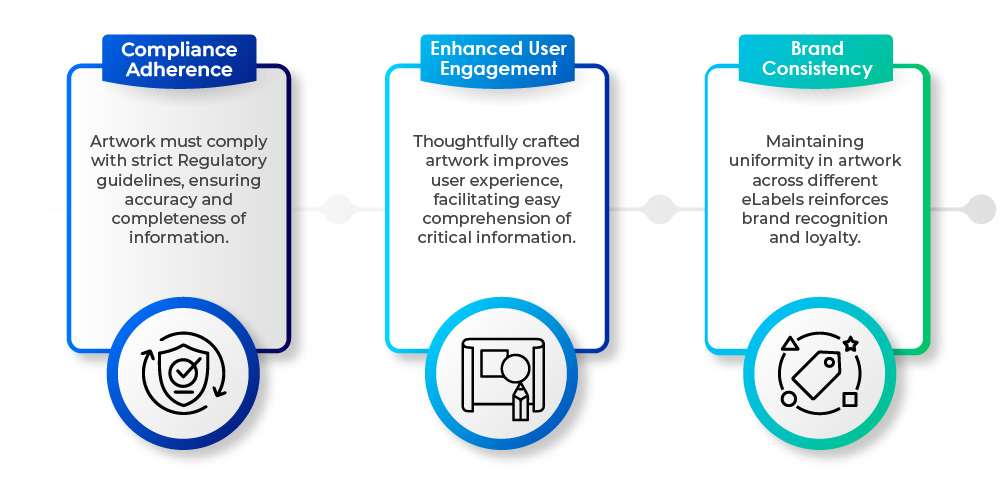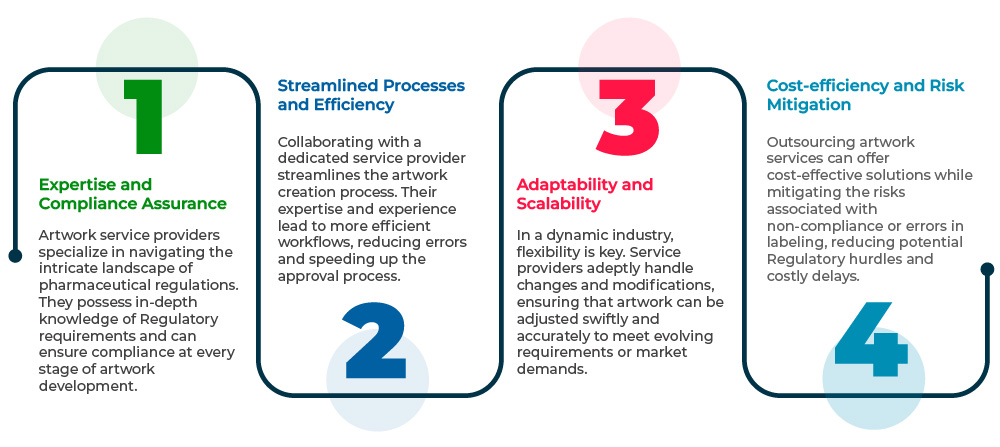
In the rapidly evolving pharmaceutical landscape, where innovation meets stringent regulations, accurate and engaging communication is crucial. Enter eLabeling, a digital revolution transforming the way drug information is delivered. Central to this shift is the role of artwork—a crucial component that goes beyond mere aesthetics and delves into compliance, user engagement, and brand representation. Artwork also plays a vital role in effective communication and patient safety.
Revolutionize Your eLabeling Strategy
Request a consultation
The Impact of Artwork on eLabeling
- Compliance and Regulatory Standards
Artwork plays a pivotal role in ensuring compliance with stringent Regulatory standards. Each label and packaging element must comply with regulations set forth by authorities like the FDA or EMA. Artwork not only needs to be visually appealing but also adhere to specific guidelines concerning content, font size, information placement, and more.
- User Experience and Accessibility
The visual appeal of eLabels significantly influences user experience. Clear, intuitive artwork can enhance readability, making it easier for consumers and healthcare professionals to access vital information swiftly. Intelligently designed artwork can effectively organize crucial details, ensuring they are readily understandable and accessible.
- Brand Representation and Identity
The artwork serves as a reflection of a pharmaceutical company's brand identity. Consistent branding across eLabels reinforces brand recognition and fosters trust among consumers. Artwork elements like logos, color schemes, and design aesthetics are instrumental in establishing brand recall and differentiation in a competitive market.
Importance of Artwork in eLabeling

Examples of Effective Artwork in eLabeling
- Interactive dosage instructions: Animated illustrations demonstrating medication administration can provide clear and easily understandable instructions, particularly for complex medication regimens.
- 3D product models: Visualizing the physical appearance of a medication can help identify and verify the correct product, reducing the risk of medication errors.
- Multilingual pictograms and symbols: Universally recognized symbols, such as those for warnings and precautions, can effectively communicate important information to patients of diverse language backgrounds.
Collaboration with Regulatory Artwork Service Providers
Partnering with a specialized Regulatory artwork service provider is paramount for pharmaceutical manufacturers aiming for impeccable eLabeling solutions. Here's why:

The Future of Artwork in eLabeling
The future of eLabeling is bright, and artwork will continue to play an essential role. As technology advances, we can expect to see even more innovative and interactive features, such as augmented reality overlays and personalized visualizations, further enhancing the user experience and improving communication for patients and healthcare professionals alike.
Conclusion
Artwork stands as a linchpin in the realm of pharmaceutical eLabeling. Its multifaceted role extends beyond visual appeal, encompassing compliance, user experience, and brand representation. Manufacturers benefit significantly from partnering with specialized artwork service providers, ensuring adherence to regulations, enhancing efficiency, and bolstering brand integrity in an increasingly competitive industry.
In a landscape where precision, compliance, and user-centric design are imperative, the role of artwork in eLabeling emerges as an indispensable factor in the success of pharmaceutical products and brands.









